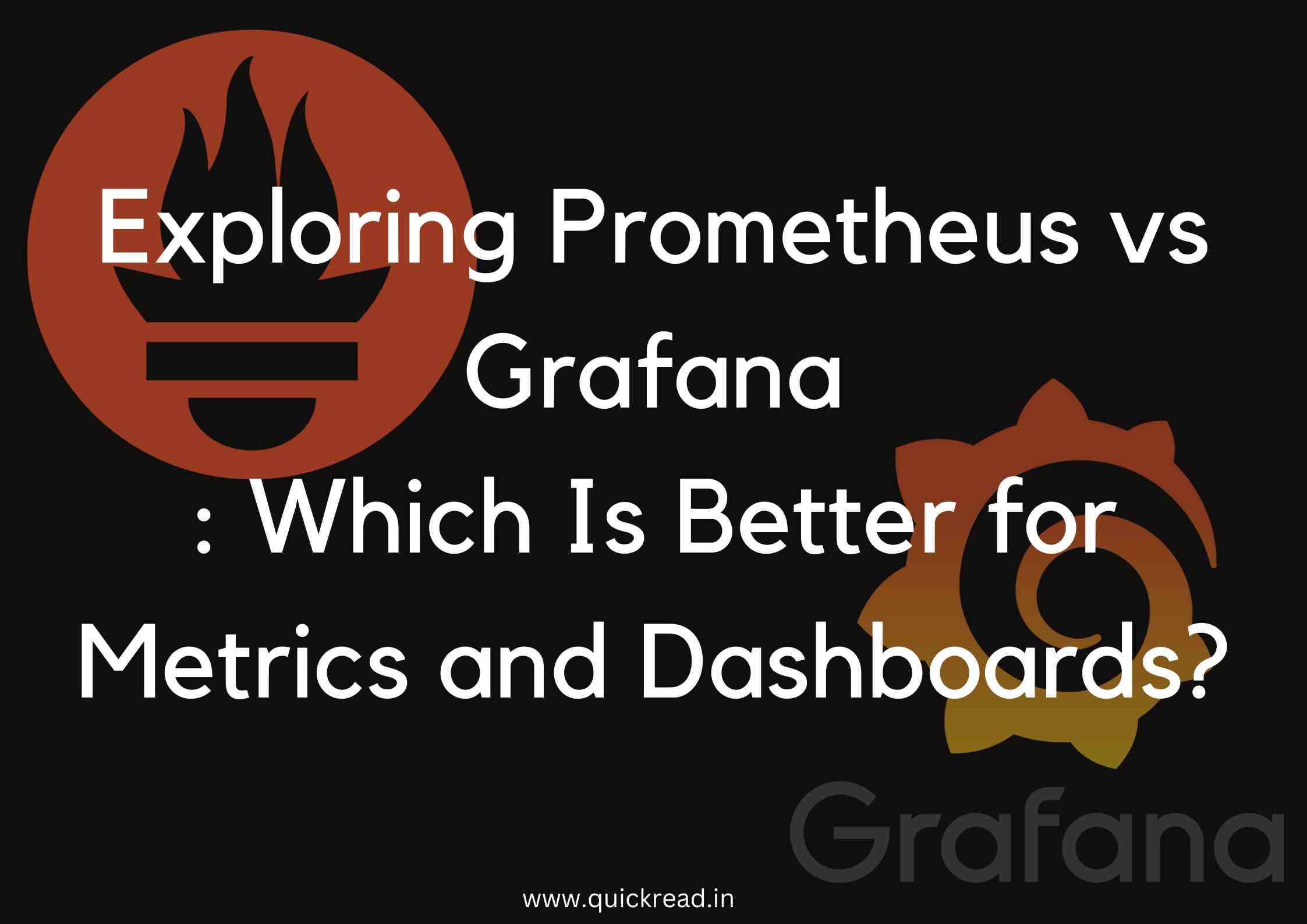Introduction
Prometheus vs Grafana: Prometheus and Grafana are both popular open source tools used for monitoring and observability. However, they serve different purposes in the monitoring stack. This article will dive into the key capabilities of Prometheus and Grafana and compare their differences.
Overview
Prometheus is a monitoring and alerting toolkit that collects metrics from monitored targets, evaluates rule-based alerts and provides a powerful query language.
Grafana is a metrics dashboard and visualization platform that integrates with multiple data sources like Prometheus to build dashboards with graphs, alerts and more.
While Prometheus handles metric collection, storage and alerting, Grafana is focused on visualization and dashboarding of the metrics data. They are often used together to deliver end-to-end observability.
Prometheus Capabilities
Prometheus has a number of capabilities that make it a popular monitoring solution:
- Multi-dimensional data model: Prometheus uses a time series database to store metrics as a stream of timestamped values. This allows slicing and dicing data in multiple dimensions.
- Flexible query language: Prometheus provides PromQL, a functional query language that lets users select and aggregate time series data in real time. Complex queries can be composed to derive insights.
- Pull-based monitoring: Prometheus uses a pull model, scraping or pulling metrics from instruments exposed by target applications and systems on a periodic basis.
- Targets and exporters: Metrics can be pulled from a wide variety of target systems using exporters that convert metrics into a Prometheus-compatible format.
- Alerting and recording rules: Prometheus provides a rule syntax to define alerting and recording rules to derive new time series from existing data.
- Multiple modes: Prometheus can be run in multiple modes. Most common is single server, but federation and high-availability modes allow scaling and redundancy.
Grafana Capabilities
Grafana provides the ability to visualize the data analyzed and stored in Prometheus:
- Pluggable data sources: Grafana integrates with many data sources including Prometheus, Graphite, MySQL, PostgreSQL etc. Users can query different sources and correlate the data.
- Customizable dashboards: Users can create rich dashboards comprising of GUI panels like graphs, tables, heatmaps and more to visualize different metrics.
- Annotations: Grafana allows annotating graphs with rich events to mark deployments, changes etc for better correlation.
- Templating: Dashboard templates allow creating reusable dashboard components and themes for consistent look and feel.
- Alert notifications: Alert rules can be defined in Prometheus which Grafana can access to send notifications via Slack, PagerDuty etc.
- Community support: There are 1000+ dashboard templates for common systems contributed by the Grafana community.
Key Differences Prometheus vs Grafana
| Prometheus | Grafana |
|---|---|
| Pull-based monitoring system and time series database | Metrics visualization and dashboarding platform |
| Collects, stores and analyzes metrics | Integrates with data sources like Prometheus to visualize |
| Has own data model and query language | Leverages data sources’ query languages |
| Stores metrics time series data | |
| Performs rule-based alert evaluation | |
| Has basic graphing capabilities | Advanced graphing and dashboarding capabilities |
| Limited visualization flexibility | Fully customizable dashboards and graphs |
| Alerting based on promql | Alert notifications using data source alert rules |
When to Use Prometheus vs Grafana
Based on their capabilities, some guidelines on when to use Prometheus vs Grafana:
- Use Prometheus when you need to collect, aggregate, query and alert based on time series metrics data.
- Use Grafana when you want to build rich customized dashboards to visualize metrics data from Prometheus or other data sources.
- Use Prometheus and Grafana together to get a full-featured monitoring stack – Prometheus for the backend and Grafana for the frontend.
- Prefer Prometheus if you just need basic graphing and alerting capabilities using a time series data store.
- Prefer Grafana if you want greater customization and richer visualization capabilities for metrics.
Integrating Prometheus and Grafana
Prometheus and Grafana are designed to work well together. Key integration points:
- Prometheus data source – Grafana can be configured to access Prometheus server as a data source.
- PromQL support – Grafana graphs and queries can leverage PromQL to access Prometheus metric data.
- Alerting – Alert rule definitions from Prometheus can be visualized in Grafana.
- Grafana agent – Can be used to export Prometheus metrics to Grafana Cloud managed Grafana service.
- Prometheus operator – Manages Prometheus server deployments on Kubernetes and integrates natively with Grafana.
Frequently Asked Questions
- Can Prometheus and Grafana be used independently?
Yes, Prometheus is capable of collecting, storing and alerting on metrics by itself. Grafana can also be used to visualize other data sources besides Prometheus.
- Does Grafana replace Prometheus visualizations?
Grafana provides much more customization and flexibility in building dashboards compared to Prometheus UI. It is recommended to use Grafana for visualizations.
- What benefits does Grafana provide over Prometheus graphs?
Grafana allows highly customizable graphs with advanced features like annotations, templating etc. It also enables correlating data between multiple data sources.
- How are alerts defined and notified?
Alerting rules are defined in Prometheus server. Grafana can then access the alerts data to visualize and send notifications.
- Is Prometheus required for using Grafana?
No, Grafana can visualize metrics data from many other sources like Graphite, InfluxDB, MySQL etc. in addition to Prometheus.
Conclusion
Prometheus and Grafana serve complementary purposes. Prometheus is a monitoring system while Grafana turns metrics data into rich visualizations. Using them together provides a complete monitoring stack. Assessing your specific use case will determine when just Prometheus or Grafana suffices versus using the integrated stack. Both are extremely capable open source tools that have changed monitoring workflows in the cloud-native ecosystem.


